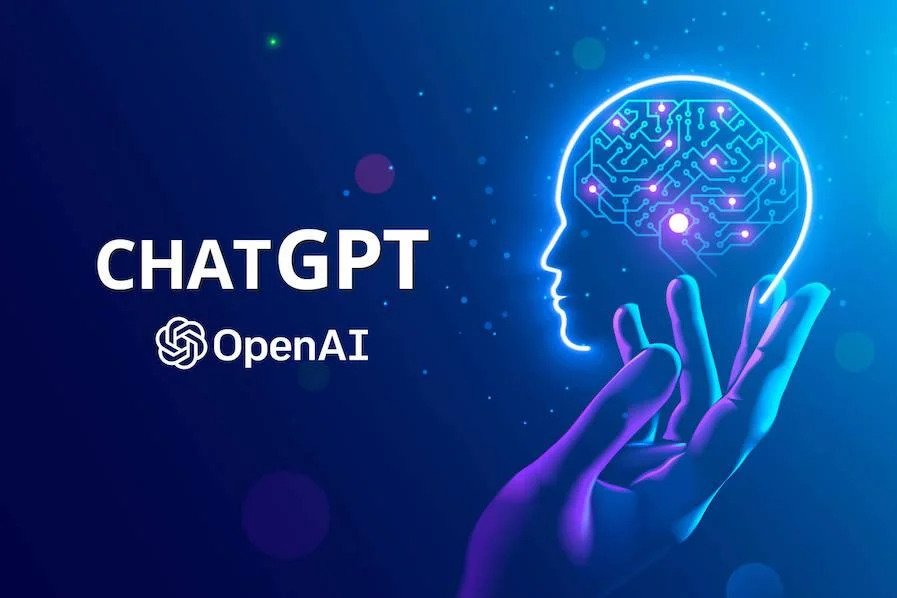In recent years, there has been a growing interest in artificial intelligence (AI) and its potential applications in various industries. One area where AI has been particularly successful is in the development of language models. These models are designed to analyze, interpret, and generate natural language text, making them an essential tool for businesses, researchers, and individuals alike. One of the most impressive and widely-used language models is ChatGPT, an AI language model developed by OpenAI. In this article, we will explore what ChatGPT is, how it works, and the benefits it offers to its users.
What is ChatGPT?
ChatGPT is a large-scale AI language model developed by OpenAI, an artificial intelligence research laboratory. The model is based on the transformer architecture, which is a type of neural network designed to handle sequential data, such as text. The architecture was first introduced in 2017 by researchers at Google, and since then, it has been widely adopted by many other organizations, including OpenAI.
The ChatGPT model was trained on a massive amount of text data, including web pages, books, and articles, and it was designed to perform a wide range of natural language tasks, including language translation, summarization, and question-answering. The model is particularly notable for its ability to generate human-like responses to natural language prompts, making it an ideal tool for chatbots, virtual assistants, and other conversational applications.
How does ChatGPT work?
The ChatGPT model works by processing input text through a series of neural network layers, each of which is designed to analyze and interpret different aspects of the text. The model uses a process called attention to focus on specific parts of the input text, allowing it to generate more accurate and relevant responses.
When a user inputs text into ChatGPT, the model first preprocesses the text, including tasks such as tokenization and normalization, to convert the text into a format that the model can understand. The model then uses its neural network architecture to analyze the input text and generate a response. The response is generated by predicting the most likely next word or words in the sequence based on the input text, using a process called autoregression.
The ChatGPT model is trained using a technique called unsupervised learning, which means that it was trained on a large dataset of text without any explicit supervision. Instead, the model was trained to predict the next word or words in a sequence of text based on the previous words in the sequence. This process allowed the model to learn the underlying patterns and structures of language without the need for explicit guidance.
Benefits of ChatGPT
ChatGPT offers a wide range of benefits to its users, including:
Natural language processing: One of the primary benefits of ChatGPT is its ability to process and understand natural language text. The model can be used to perform a wide range of natural language tasks, including language translation, summarization, and question-answering.
Conversational interfaces: ChatGPT is an ideal tool for developing conversational interfaces, such as chatbots and virtual assistants. The model can generate human-like responses to natural language prompts, allowing for more engaging and realistic interactions with users.
Improved efficiency: ChatGPT can be used to automate many language-related tasks, such as summarizing articles or generating reports. This can help businesses and individuals save time and improve their productivity.
Personalization: ChatGPT can be trained on specific datasets to personalize its responses to individual users. For example, a chatbot designed for a specific industry could be trained on industry-specific text to improve its responses to users.
Language learning: ChatGPT can be used to help people.
In Which Ways ChatGPT Can be Used?
ChatGPT can be used in a variety of ways depending on your specific use case, but the following are some general steps to get started:
Choose a platform: There are several platforms that offer pre-trained instances of ChatGPT, such as Hugging Face, Google Cloud AI Platform, and OpenAI’s API. You can also train your own instance of ChatGPT if you have access to a large dataset of text and the necessary computational resources.
Choose a programming language: ChatGPT can be integrated into your application using several programming languages, including Python, Java, and Node.js.
Integrate ChatGPT into your application: Once you have chosen a platform and programming language, you can integrate ChatGPT into your application using the provided API. This typically involves sending an input text to the API and receiving a generated response in return.
Fine-tune ChatGPT (optional): If you want to improve the accuracy of ChatGPT for your specific use case, you can fine-tune the model by training it on a dataset of text that is relevant to your application.
Evaluate ChatGPT performance: Once you have integrated ChatGPT into your application, it’s important to evaluate its performance and make any necessary adjustments. This might involve measuring response time, accuracy, and user satisfaction.
Overall, using ChatGPT can be a powerful way to automate natural language interactions with users and improve the efficiency of your application. However, it’s important to keep in mind the potential limitations of the model and to test its performance carefully before deploying it in a production environment.
Frequently Asked Questions about ChatGPT
Q: What is ChatGPT?
A: ChatGPT is an AI language model developed by OpenAI, which is capable of analyzing, interpreting and generating natural language text.
Q: How does ChatGPT work?
A: ChatGPT uses a neural network architecture based on the transformer architecture, which is designed to handle sequential data, such as text. The model is trained on a large dataset of text using unsupervised learning, and it generates responses by predicting the most likely next word or words in the sequence based on the input text, using a process called autoregression.
Q: What are the benefits of using ChatGPT?
A: ChatGPT offers a range of benefits, including natural language processing, the ability to develop conversational interfaces, improved efficiency, personalization, and language learning.
Q: What kind of tasks can ChatGPT be used for?
A: ChatGPT can be used for a wide range of natural language tasks, such as language translation, summarization, question-answering, and sentiment analysis.
Q: How accurate is ChatGPT?
A: The accuracy of ChatGPT depends on the quality and size of the dataset used for training. However, the model has been shown to perform well on a range of natural language tasks, and it is continually improving as it is trained on more data.
Q: Can ChatGPT be customized for specific industries or use cases?
A: Yes, ChatGPT can be customized by training it on specific datasets, such as industry-specific text, to improve its responses to users.
Q: What are some potential applications for ChatGPT?
A: ChatGPT has many potential applications, including chatbots, virtual assistants, customer service, language translation, content generation, and more.
Q: What are some limitations of ChatGPT?
A: One limitation of ChatGPT is that it can sometimes generate responses that are nonsensical or inappropriate. Additionally, the model requires a large amount of computational resources to operate effectively, which can be a barrier to its adoption in some contexts. Finally, it may not always be able to understand and generate responses for highly specialized or technical language.
What is The Future of ChatGPT?
The future of ChatGPT looks bright, as the technology continues to evolve and improve. Here are a few trends and developments to watch for in the coming years:
Increased personalization: As ChatGPT continues to be fine-tuned for specific use cases, it will become more and more personalized to individual users. This will allow for more natural and engaging conversations that feel tailored to each person’s needs and interests.
Improved language translation: ChatGPT is already being used for language translation, but the technology is still evolving. In the future, we can expect more accurate and nuanced translations that better capture the nuances of different languages and dialects.
Integration with other AI technologies: ChatGPT can be integrated with other AI technologies, such as computer vision and speech recognition, to create more seamless and interactive user experiences. This could lead to the development of more sophisticated virtual assistants and chatbots that can understand and respond to a wider range of user inputs.
Increased efficiency: ChatGPT can automate many tasks that would otherwise require human intervention, which can save businesses time and money. As the technology becomes more advanced, we can expect it to become even more efficient at handling routine tasks, freeing up human workers to focus on more complex and strategic work.
Ethical considerations: As AI technologies like ChatGPT become more widespread, it’s important to consider the ethical implications. This includes ensuring that the technology is used responsibly and transparently, and that it does not reinforce biases or discrimination.
Overall, the future of ChatGPT is likely to be characterized by increased personalization, improved efficiency, and more sophisticated integrations with other AI technologies. As the technology continues to evolve, it will likely play an increasingly important role in how we interact with and make use of natural language text.

